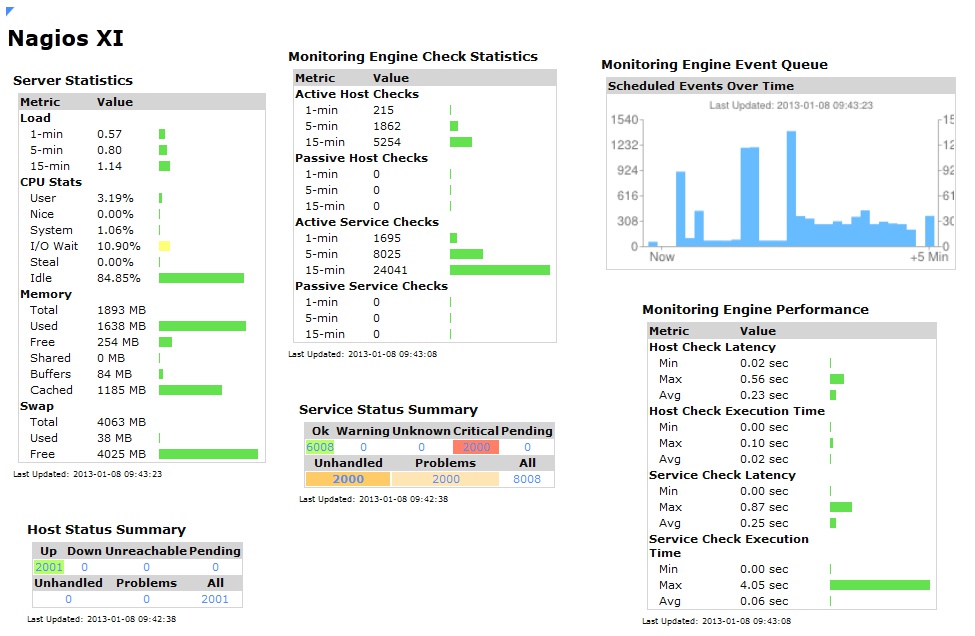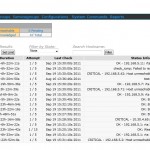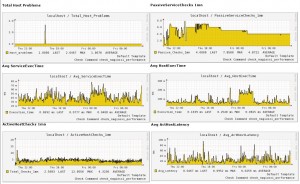With each new version of Nagios XI, we do our best to include the most important bug fixes, improvements, and features that we can accomplish in a few weeks time. The upcoming Nagios XI 2012r1.4 is going to be a notable release of XI for both performance improvements and internationalization.
Internationalization
For our international users, we’ve been hard at work to update XI appropriately for internationalization, as well as kick-starting multiple translations using Google translate. We’ve been working to balance code updates with community contributions for languages, and this upcoming release will ship with a default.pot file that can be used to update user’s PO files that they may have begun populating. This release of XI will ship with kick-started translations in the following languages.
- German
- Spanish
- French
- Italian
- Portuguese
- Russian
- Korean
- Chinese
Performance Improvements in 1.4
For customers with larger installs, we’ve been analyzing bottlenecks in both the monitoring process and the UI to try and make XI run faster and leaner. Users with hosts+services in the thousands will almost certainly see an improvement both in CPU load and page load times in the UI. For changes that affect the monitoring process, we updated the Monitoring Engine Event Queue dashlet and the Monitoring Engine Check Statistics Dashlets to all pull data from the same status information that the rest of XI uses, which reduces an enormous amount of data from needing to be logged to mysql from the monitoring process. The end result of this change is that mysql will only need to be doing about 30% of the work that it was having to do in previous releases. For large installs, this is a big deal!
The other key change that all users will probably see a benefit from is a refactoring of data queries for AJAX loaded content in the XI interface. Load times for dashlets that contain tactical or summary data went from 15-20 seconds per dashlet down to .05 seconds in local tests with 10k checks. The other upside of this change is that the CPU usage from XI users accessing the interface is substantially reduced. The Tactical Overview dashlets see the largest benefit in load times by far. For users who had to utilize the unified Tactical Overview for performance reasons, we encourage you to try the dashlet version in 1.4.
We hope to have 1.4 ready to release sometime this week, we appreciate our community of users and the feedback that we continue to get for our product. Thanks for helping us make XI better!


















